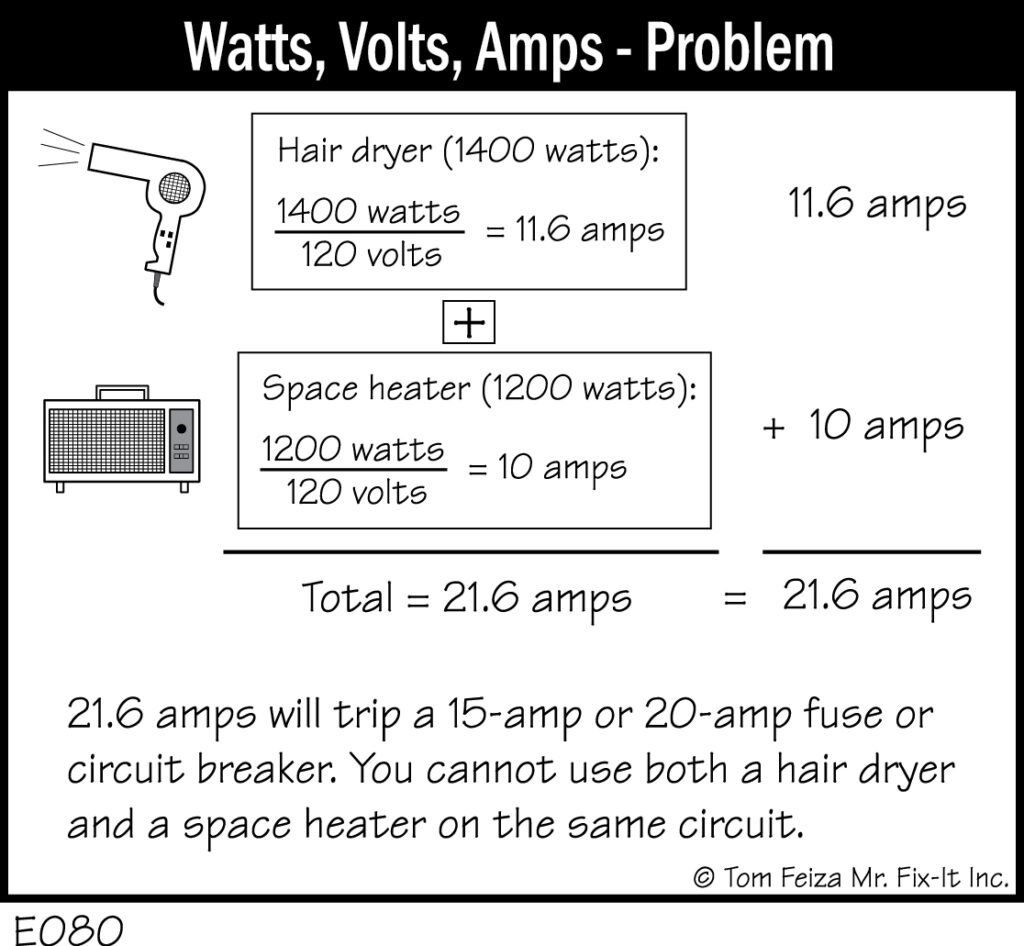All electrical outlets, appliances and lighting in homes are protected by circuit breakers (or by fuses in older homes). Most of us know about the breakers in the main electrical panel.
The breakers trip if there is an overload in the wiring circuit. They protect the wire from overheating. The flow of electrons through the circuit powers the connected load, and you can force just so many electrons through a wire before it becomes overloaded and warm or even dangerously hot.

It’s easy to overload a circuit. Look at the illustration: a space heater or hair dryer in conjunction with other loads can easily exceed the 15- or 20-amp breaker and wire limit. If a circuit breaker routinely trips, lighten the load and remove the offending device. In older homes, this may take rewiring and splitting loads and installing new wiring and breakers.
When breakers trip often, the usual culprits are heating devices like hair dryers, space heaters, toasters or pizza ovens. Window-hung air conditioners also demand high loads of current. Managing the use of these current-intensive devices will help prevent the frequent tripping of breakers.

